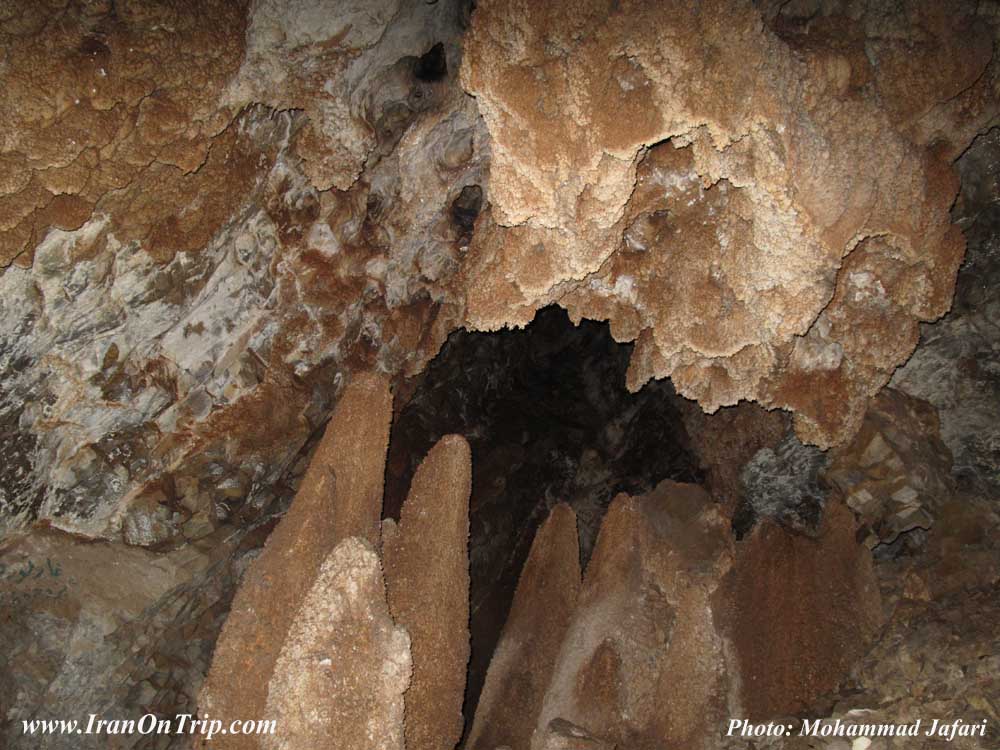Roodafshan Cave

Position of the Cave
In the east of Tehran, where you are on the Tehran-Firouzkouh road, after passing Damavand, you arrive to a bifurcation that is named "Seyed-Abad". From here, one road goes to Firouzkouh and another one after 6 km reaches Kalak Village.
After passing this rural road, and traveling 11 km from Kalak, there stands a sign showing the direction toward Roodafshan Village. This is a graveled road between the river-bed and mountain. Finally after going 26 km from the Seid-Abad cross-section, you arrive at Roodafshan Village.
GPS position: 35.6166667 ( latitude ), 52.483333 ( longitude )
Geographical Specifications
The cave stands in the 50 km from S-E of township of Damavand, near the Roodafshan Village in a mountainous region. The distance between Roodafshan Village and the cave is about 1000 m. For climbing, it is important to have proper clothes and special equipment. First of all, you must go across a bridge and then upward in a serpentine road.
The entrance of the cave is elliptic with a 40 m width and 12 m height, and from this perspective, it has the biggest natural entrance and it is very attractive to the all tourists and cavers. After passing this big entrance with a sloped surface and stony and rocky way, you reach to the second entrance, which is rather smaller than the first. Here, again the ground and the floor of the cave are smooth and a large portion of it receives light from the first entrance.
How a Cave Is Formed?
About 35,000 years ago, due to the Damavand's volcanic activities, the entrance of the cave that was hidden behind a big and huge rock, was cracked and little by little, it propagated. At the right hand-side of the cave, there is a strong wall, and at the left of it, there is another deep split. According to the opinion of archeologists the skeleton discovered here belonged to the Achaemenian or the Sassanid period.
The cave has plentiful of stalactites and stalagmites. Although the cave is wet, you can’t see any running water.
The depth of the cave is 700 or 800 m. At the end, there is an elevated passage to a small room. By using a ladder, we can climb into the small room.
This room leads to the other sections of the cave through a narrow hallway. In this part of cave, the water is stagnant on some parts, but water current could be detected underneath.
The average temperature inside the cave is 6 degrees centigrade and the length of the main road is about 550 m. The distance between two halls is 20 m. For the tourists it is better to go with a guide and have sufficient means of caving.
.....
.....
.....

.jpg)



























